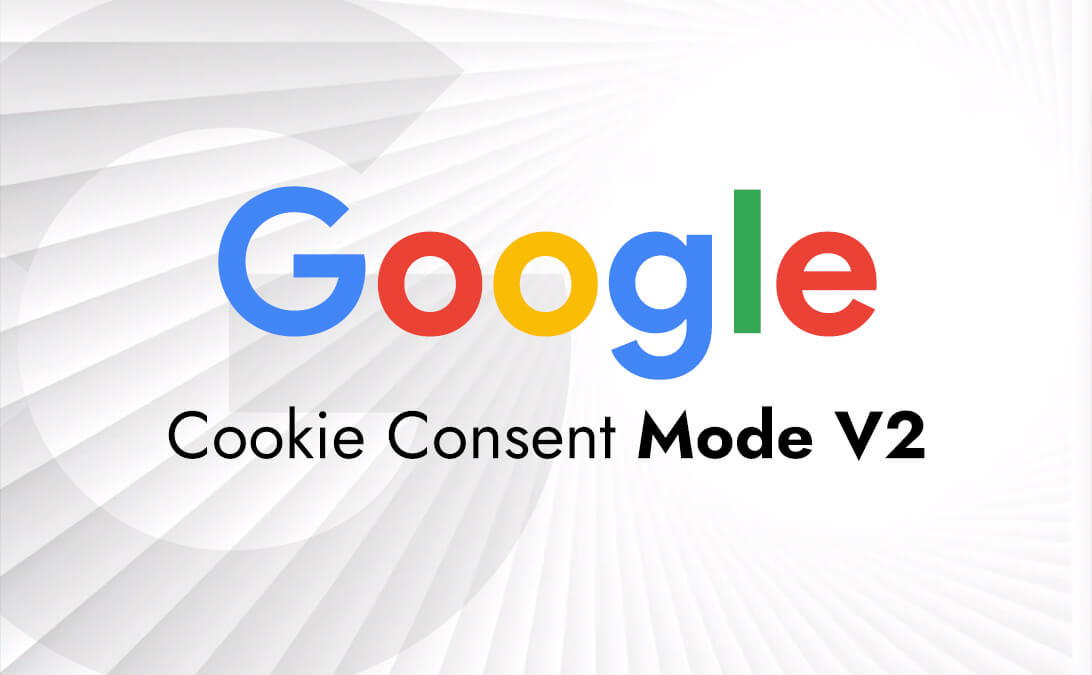
Google Cookie Consent Mode V2 – Explore What’s New
22 March 2024
Google consent mode V2 has been released and brings new requirements for running personalised ads in Europe as it follows compliance with the latest EU regulations. After this release, companies will be required to update their current consent mode to maintain targeting capabilities for advertisement purposes.
Companies using Google Ads or Google Analytics 4 in the UK or Europe to gather data for advertising purposes need to upgrade their consent mode to V2.
This article explores the Google Cookie Consent Mode V2 in sufficient detail for you to understand its impact and necessity.
Why Google Consent Mode is so Important?
Google Consent Mode has existed since 2020 and ensures that the search engine giant Google can maintain its advertising business worldwide while staying compliant with data protection legislation and privacy regulations.
A lot of misinformation relating to consent mode is available online, but it naturally refers to Google services only. You can think of it as an effective tool that assists marketers in managing the existing gap between data privacy laws and data-driven marketing strategies.
A user can either give consent or opt out of the cookies related to Google’s products and services. This is where the Consent Mode kicks in and chooses whether collecting full data (when the user opts in) or limiting itself to anonymous data (when the user opts out) is viable.
It is important to keep in mind that after doing this, the website is fundamentally Google-compliant only, and it does not mean that the site’s larger cookies or consent issues will be resolved. Thus, only a part of the optimisation is achieved when you implement the first mode or the latest Google consent mode v2.
What is Google Consent Mode V2 & How Does it Differ from V1?
The consent mode V2 can be understood as a viable update to V1. Its primary goal is to precisely fetch signals from users who do not grant consent to personal data collection, which, in certain ways, affects the behaviour of Google services.
The latest version of Google Consent Mode V2 has well-defined implementation concepts in Basic and Advanced modes.
Basic Consent Mode v2
Implementing the Basic Consent mode v2 means activating Google Consent Mode, and initiating data collection only when the user grants consent.
Advanced Consent Mode v2
Implementing the Advanced Consent mode means activating Google Consent Mode, and initiating data collection regardless of whether the website visitor grants or does not grant permission. So, user consent status does not matter under the advanced mode v2 with the Google tag manager.
The Consent Mode v2 introduces two additional states called ad_user_data and ad_personalization. The existing content states of V1 will now work alongside these states for Google tags and Google ads.
The table below depicts the functions of the various explicit user consent states that are available with the latest update.
| Consent State | Consent Category | Consent Description |
| ad_storage | Marketing | This state enables storage like cookies, which are actively responsible for advertising. |
| analytics_storage | Statistical | The function of this state is to permit storage like cookies, which are actively related to analytics throughout the site visit. |
| functionality_storage | Functional | The main function of this state is to permit the storage that safeguards the proper functioning of the website or the app, like language settings. |
| personalization_storage | Functional | This consent state is primarily responsible for enabling personalization storage like video recommendations. |
| security_storage | Necessary | This consent states functions for permitting security aspects like authentication, checking fraudulence, and various user protection features. |
| ad_user_data | Marketing | This is the newly introduced consent flag and functions behind permitting the transmission of user data related to advertising to Google. |
| ad_personalization | Marketing | It is also a new consent flag and primarily sets consent for personalised advertising. |
What are the Benefits of Google Consent Mode V2?
The two key features and benefits of the Google Consent Mode V2 are:
- Implementing the update can help you fetch advertising data, which acts as valuable modelling data captured by Google tags for analytics purposes.
- Despite failing to gather data where user permissions are not available, consent mode v2 includes machine learning with AI data modelling that proves helpful in reconstructing conversion models.
Do I Need to Implement Google Consent Mode V2?
If your online business or website is based in the UK or Europe and is dependent on Google services like Google Ads & Google Analytics 4 for broadcasting ads, you must upgrade to Google Consent Mode V2.
If you fail to comply with Google’s standards after March 2024, you cannot access data, which will further impact your personalised Google ads campaigns.
How can chilliapple help me with Google Consent Mode v2?
At chilliapple, an established software agency based in the UK, website owners choose us for new builds and stay with us for upgrade and maintenance services. Our Google consent mode v2 experts can implement the latest upgrade on your site with the required precision to ensure the latest standards in consent management platform optimisation and adherence to European data privacy regulations.



